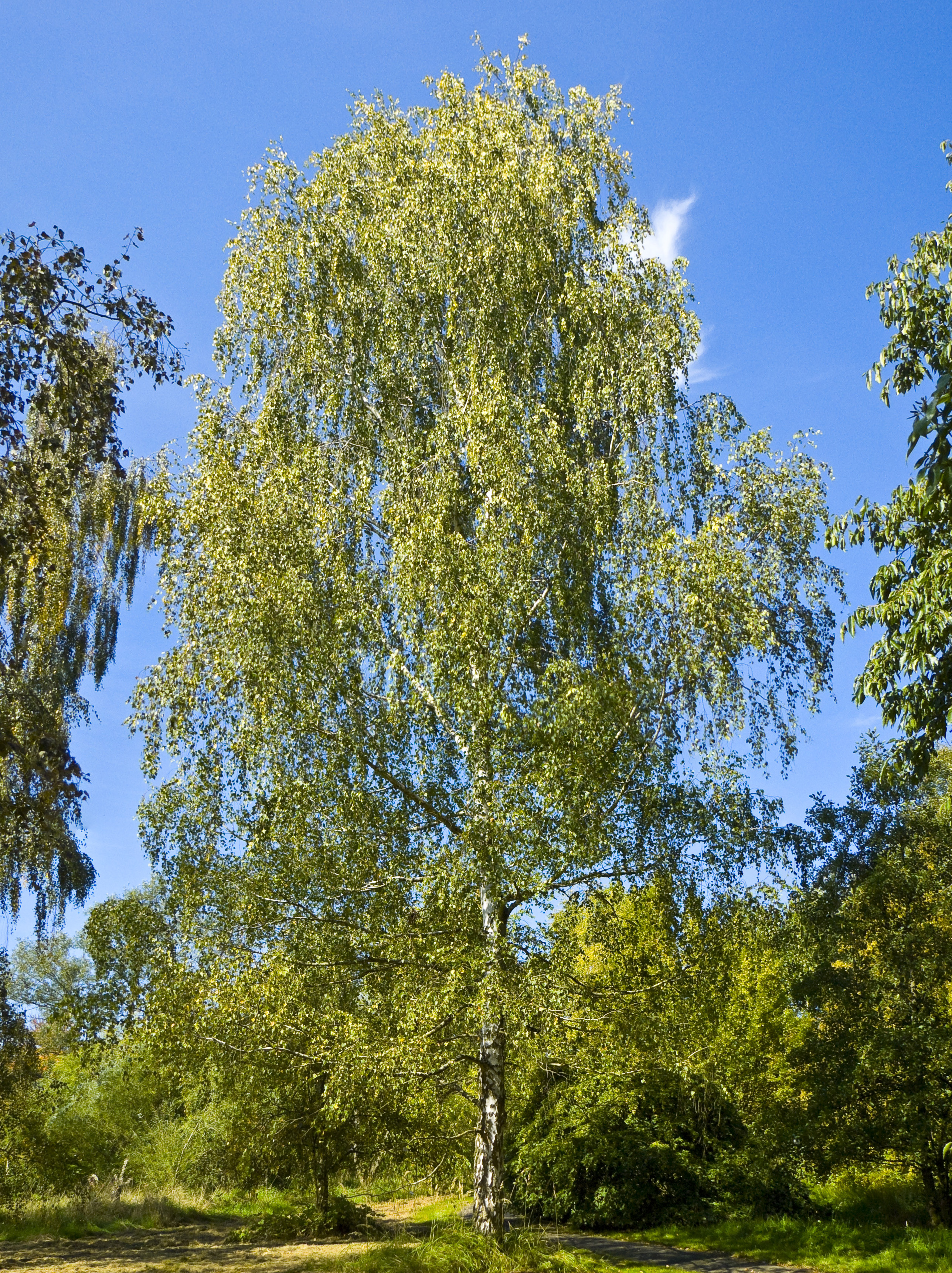
FileBetula pendula 001.jpg Wikimedia Commons
Betula pendula Youngii is a species of birch tree in the family Betulaceae. It is native to the mountains of central and southern Europe. Betula pendula Youngii is a medium-sized tree, typically growing to 20-30 m tall. The bark is pale yellowish-brown, and smooth on young trees, but becomes deeply fissured and scaly on old trees.

Betula pendula ‘Youngii’ / Weeping Birch ‘Youngii’ Caragh Nurseries
A small growing variety of Weeping European Birch, ´Youngii´ has a dome shape, a weeping habit and white bark. Trim the foliage to accentuate the trunk, which has been trained to a serpentine form. This white, serpentined trunk is a wonderful accent, a stylistic swoosh in the garden, creating contrast in form and color wherever it is placed.
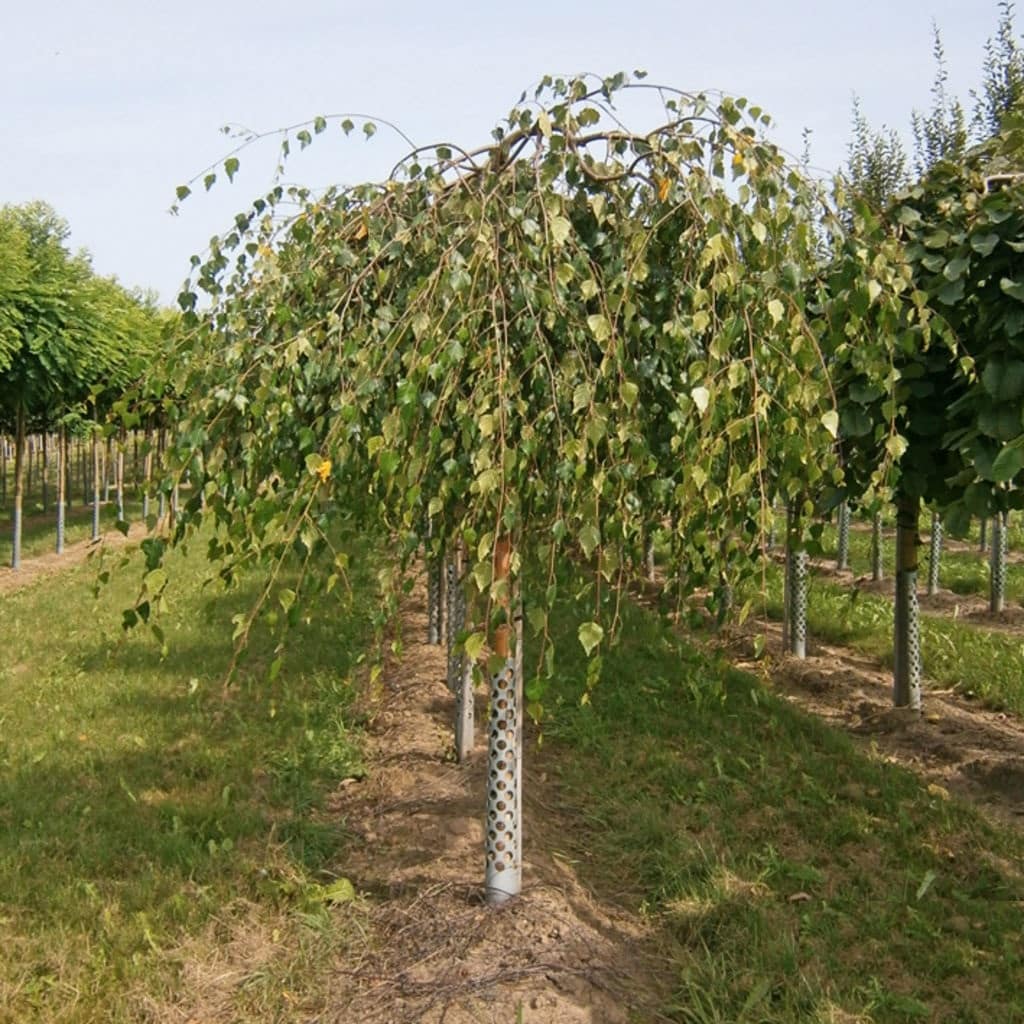
Betula pendula Youngii (Young's Weeping Birch) Practicality Brown
Common Name: Young's weeping birch Genus: Betula Species: pendula Cultivar: 'Youngii' Skill Level: Experienced Exposure: Full sun, Partial shade Hardiness: Hardy Soil type: Well-drained/light.
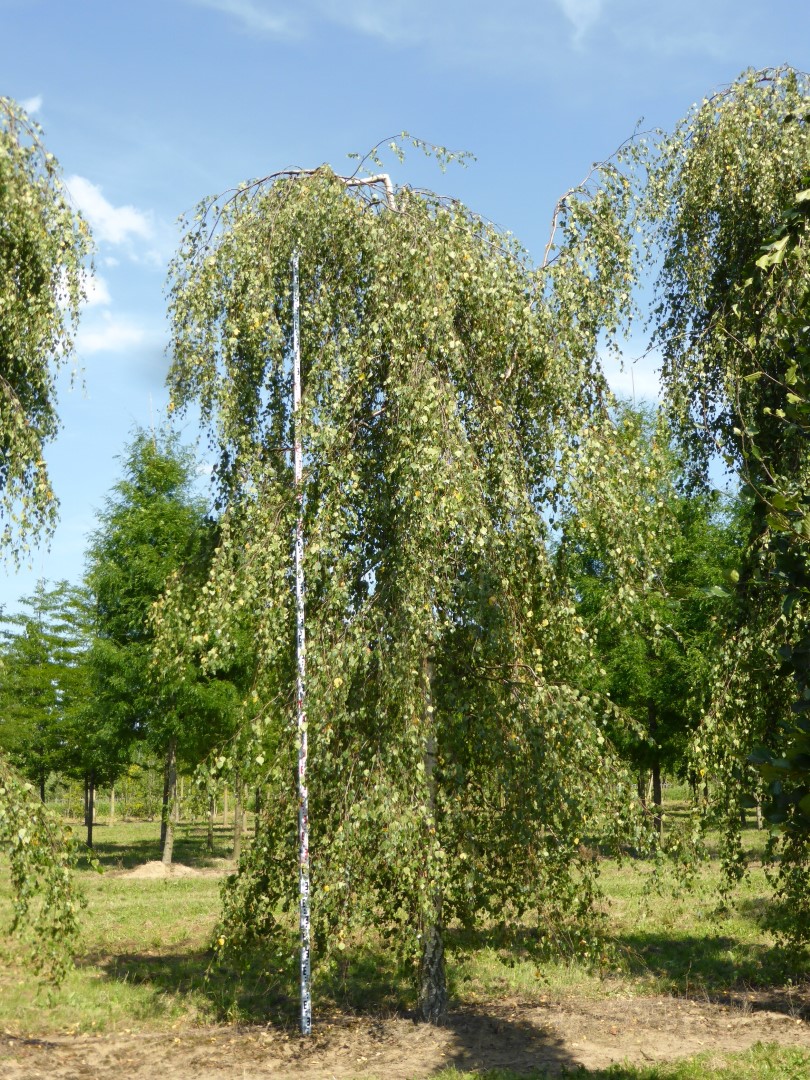
Betula pendula 'Youngii' Young's wheeping birch Van den Berk Nurseries
Foliage. Deciduous. Habit. Pendulous weeping. Genus. Betula can be deciduous trees or shrubs, usually colouring well in autumn and often with striking white, pink, or peeling brown bark; separate male and female catkins open before or with the leaves in spring. Name status. Accepted. Advertise here.
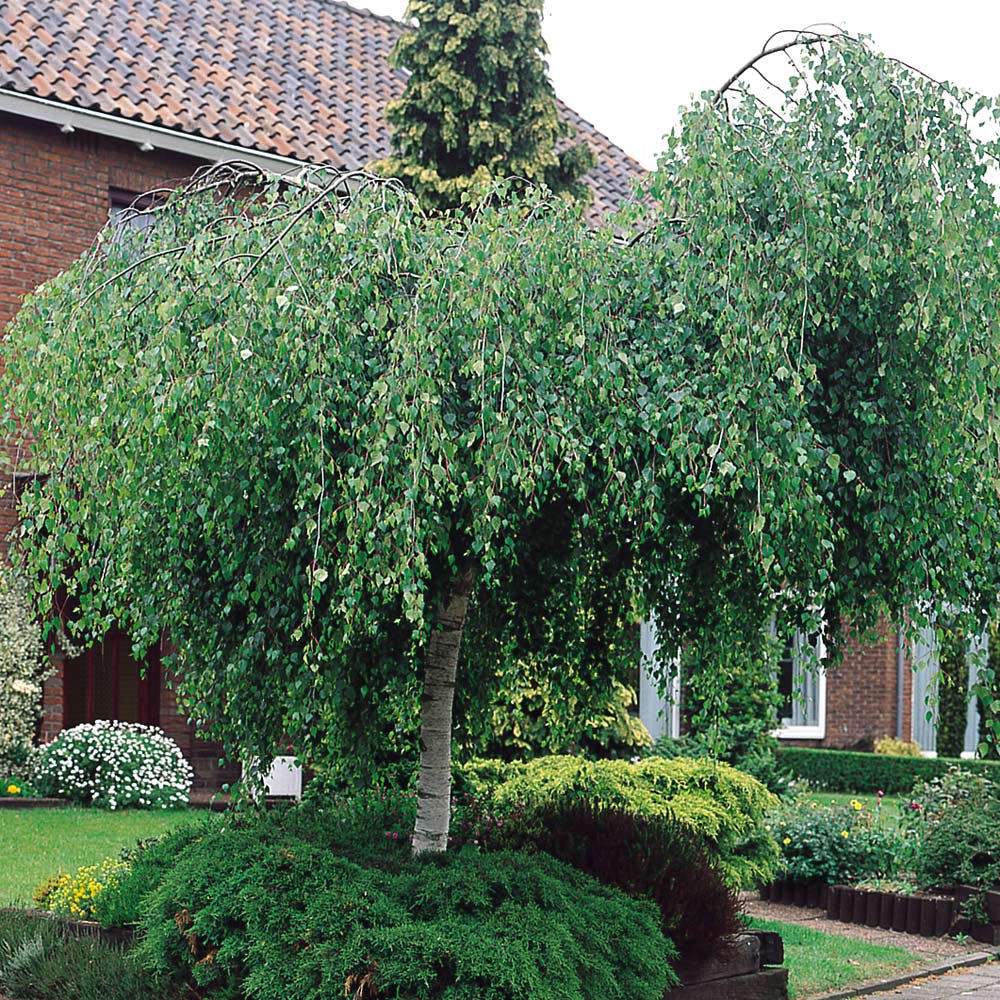
Betula pendula Youngii (Weeping Birch) Express Garden Shop
Betula pendula'Youngii' Figure 1. Middle-aged 'Youngii' European Birch. 'Youngii' European Birch1 Edward F. Gilman and Dennis G. Watson2 INTRODUCTION Youngs Weeping European Birch is graceful, weeping ornamental with wonderful yellow fall color but is susceptible to fatal attacks of bronze birch borer (Fig. 1).

Betula pendula 'Youngii' Young's wheeping birch Van den Berk Nurseries
Betula pendula 'Youngii'Young's European white birch. An unusual weeping and somewhat contorted cultivar of the European white birch. Habit: A weeping mop-like form with no central leader. Definitely catches the eye, alive or dead. I have seen specimens effectively used in pairs to draw attention to commercial entrances.

Betula pendula Youngii (Weeping Birch) Express Garden Shop
Betula pendula, commonly known as silver birch, warty birch, European white birch, or East Asian white birch, is a species of tree in the family Betulaceae, native to Europe and parts of Asia, though in southern Europe, it is only found at higher altitudes. Its range extends into Siberia, China, and southwest Asia in the mountains of northern Turkey, the Caucasus, and northern Iran.
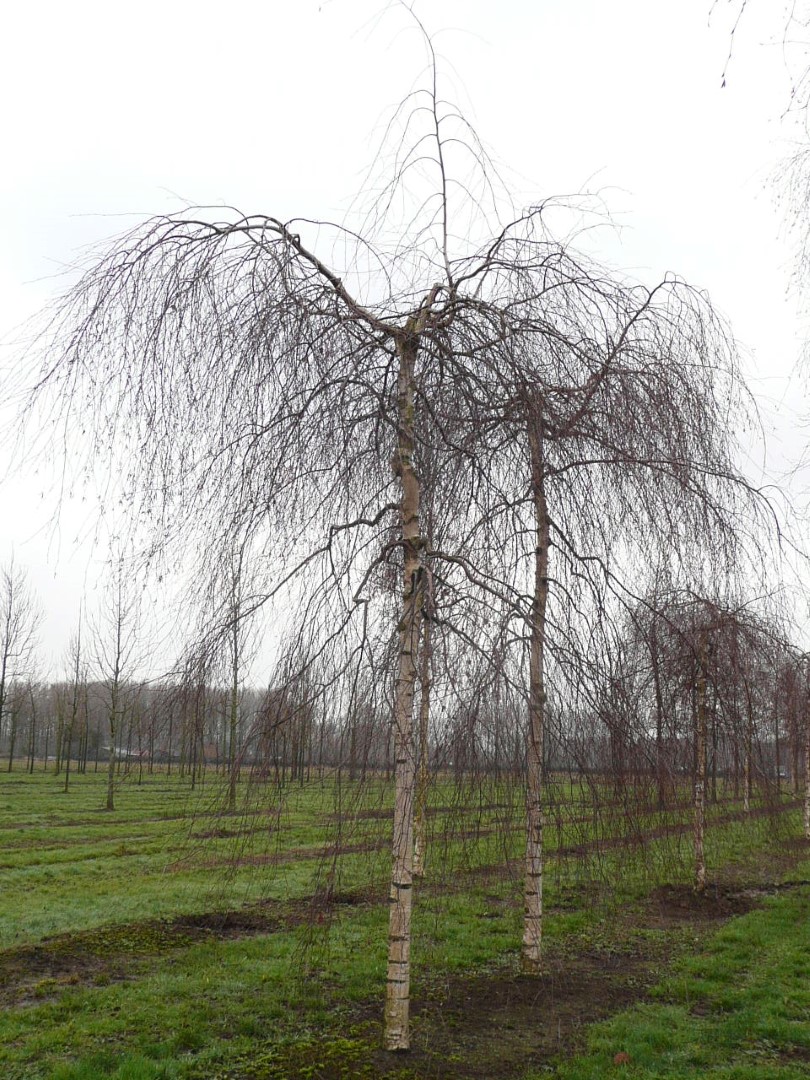
Betula pendula 'Youngii' Young's wheeping birch Van den Berk Nurseries
Betula pendula 'Youngii': 'Youngii' European Birch 1. Edward F. Gilman and Dennis G. Watson 2. Introduction. Young's weeping European birch is graceful, weeping ornamental with wonderful yellow fall color but is susceptible to fatal attacks of bronze birch borer. The leaves are often browned by birch leaf miner.
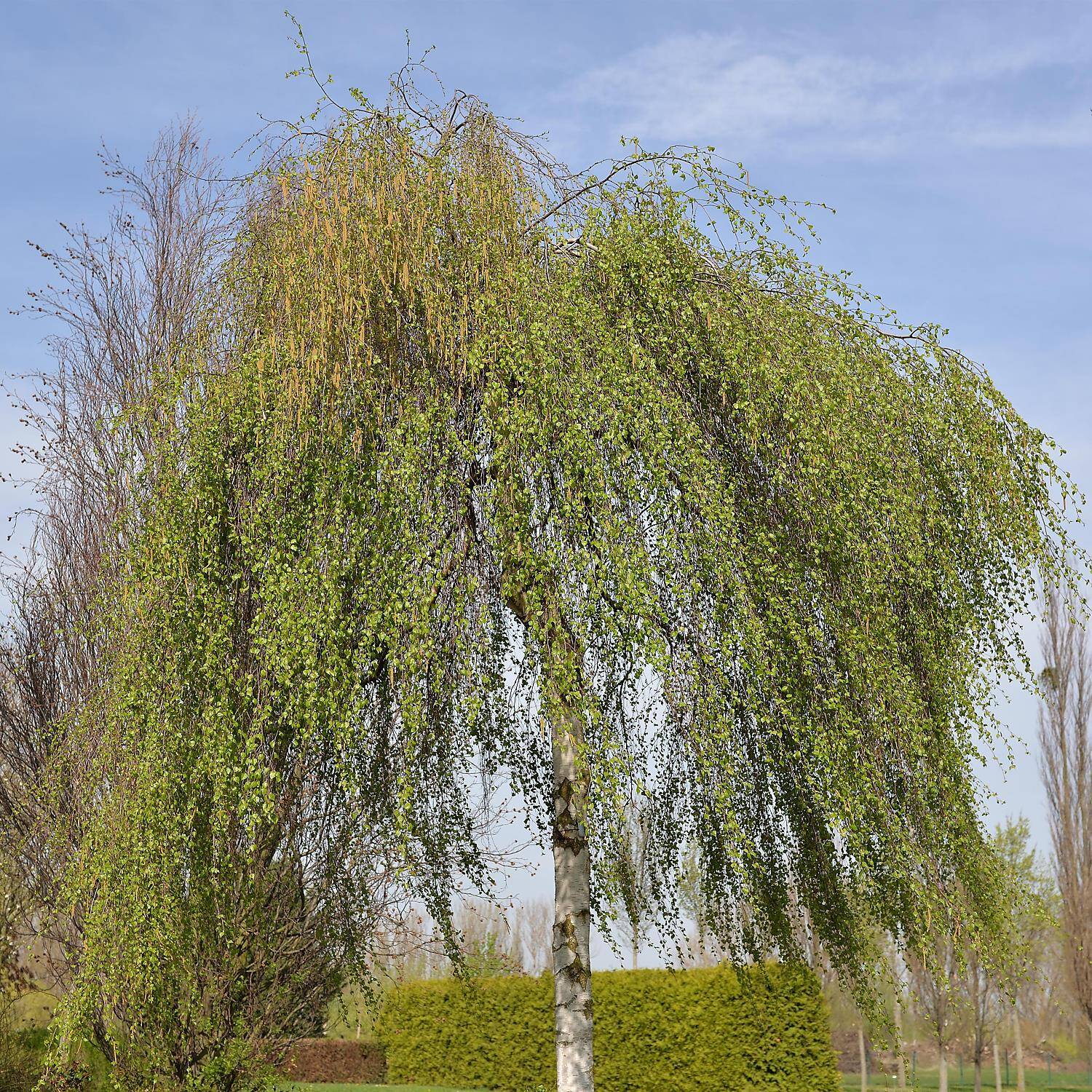
Trauerbirke 'Youngii' Betula pendula 'Youngii'
Betula pendula 'Youngii' View Plant Photos Locate. 42.14729309, -87.78775024. 42.14730072, -87.78774261. European White Birch Young's weeping European white birch is a small twiggy tree with a weeping or pendulous habit. It is sometimes grafted onto another root stock resulting in a taller tree with an umbrella-like crown.

Betula pendula Youngii
Somewhat messy. This species and its selections (e.g., 'Youngii') are considered susceptible to the bronze birch borer, especially if under stress, e.g., grown without summer moisture.. It is also present in central-northern Asia, from Caucasus through Siberia, up into China and Japan. Betula pendula is well adapted to cold climates and is.
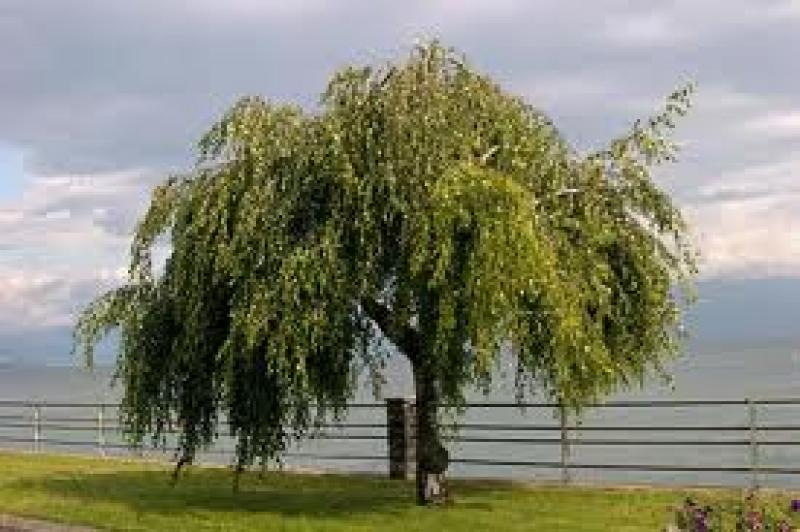
Weeping Silver Birch Betula Pendula Youngii [standard] — Aldgate Tree Farm
Betula pendula 'Youngii'. Size: 10-20' tall and 15-25' wide. Growth Habit: Weeping with irregular broad branching. Growth Rate: Moderate. Light Requirements: Full Sun. Soil Requirements: Consistently moist to wet soils. Appeal: Young's Weeping Birch is an excellent specimen tree or even patio plant that has year round interest.

Plant Gallery Encyklopedia Roślin Betula pendula 'Youngii' Brzoza brodawkowata Younga
Betula pendula 'Youngii' Common name: Young's Weeping Birch. Pronunciation: BET-u-la PEN-dew-la. Family: Betulaceae. Genus: Betula. Type: Broadleaf. Native to (or naturalized in) Oregon: No. Deciduous tree, 10-12 ft (3-3.7 m), pendulous slender branches provide a weeping form, often grafted to a standard rootstock to produce an umbrella-like crown.
Betula pendula 'Youngii' Farmyard Nurseries
Betula pendula ( Young's Weeping Birch ) This cultivar is shaped like a dome and reaches up to 25′ tall. It has warty branchlets and white, peeling bark. Rough, dark cracks on trunks are characteristic of older trees. Leaves are green, toothed, diamond shaped and turn yellow in fall. Males bear tan colored catkins in early spring.

Betula pendula ‘Youngii’ (Povešava breza) Drevesnica KURBUS STARŠE
Young's Weeping Birch 'Youngii' Betula pendula.. Betulaceae (beh-tyoo-LAY-see-ee) Info. Genus Betula (BET-yoo-luh) Info. Species pendula (PEND-yoo-luh) Info. Synonym Sun Exposure Full Sun. A small growing variety of Betula pendula. Has a dome shape, a weeping habit and white bark.

Betula pendula 'Youngii', Stamm, Trauerbirke 'Youngii' Baumschule Ley
Young's Weeping Birch (Betula pendula 'Youngii') General Plant Information ; Plant Habit: Tree: Sun Requirements: Full Sun Full Sun to Partial Shade: Water Preferences: Mesic Dry Mesic Dry: Minimum cold hardiness: Zone 4a -34.4 °C (-30 °F) to -31.7 °C (-25 °F) Maximum recommended zone: Zone 7a: Leaves:
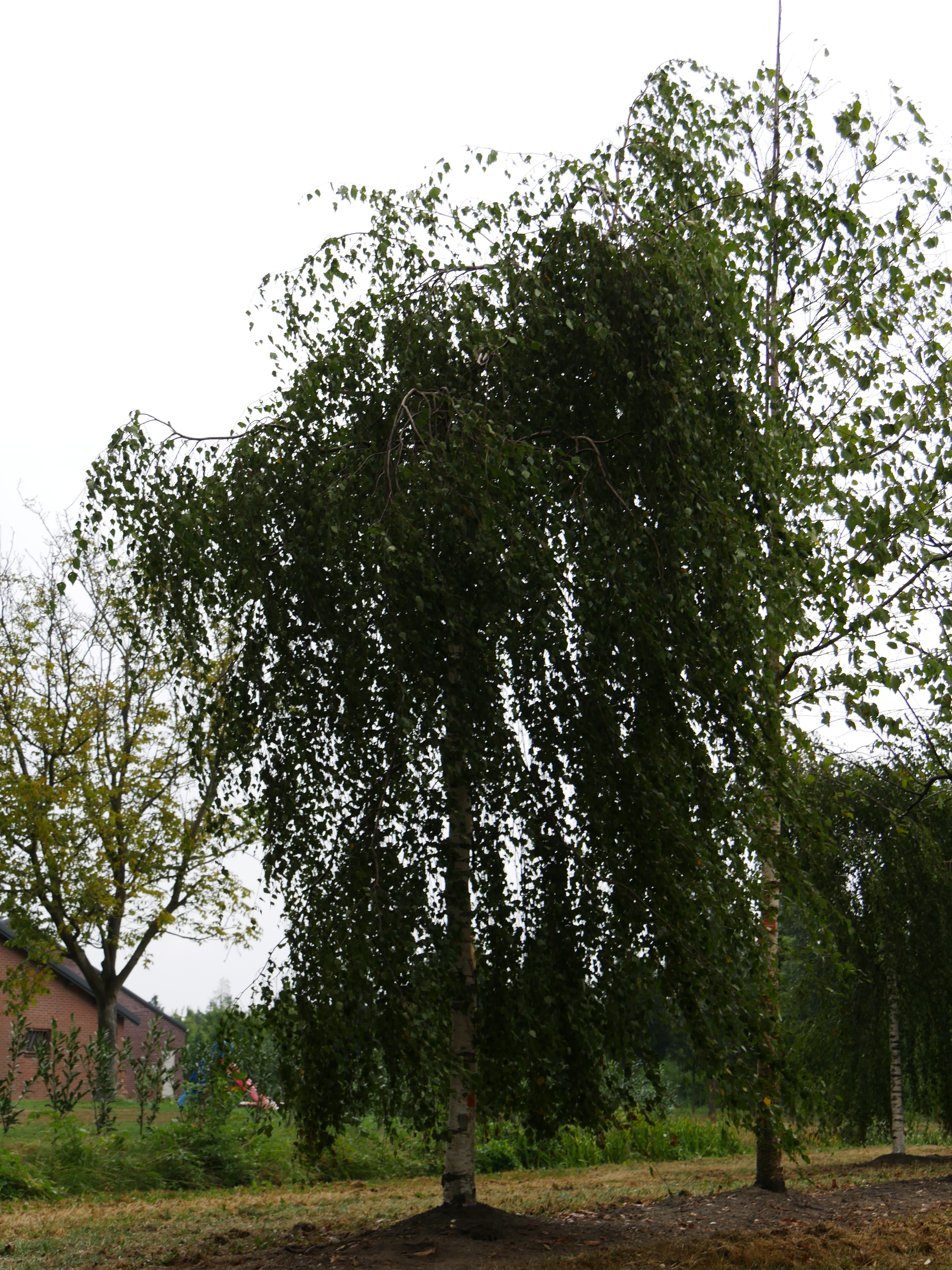
Betula pendula 'Youngii' Young's wheeping birch Van den Berk Nurseries
Description: Betula pendula 'Youngii', also known as Youngs Weeping Birch creates a mushroom-headed, medium weeping tree with branches long enough to reach the ground. Rough white bark has black fissures with age. Triangular, serrated, glossy green leaves arrive in the spring followed by yellowish brown catkins. In the autumn, the foliage turns.